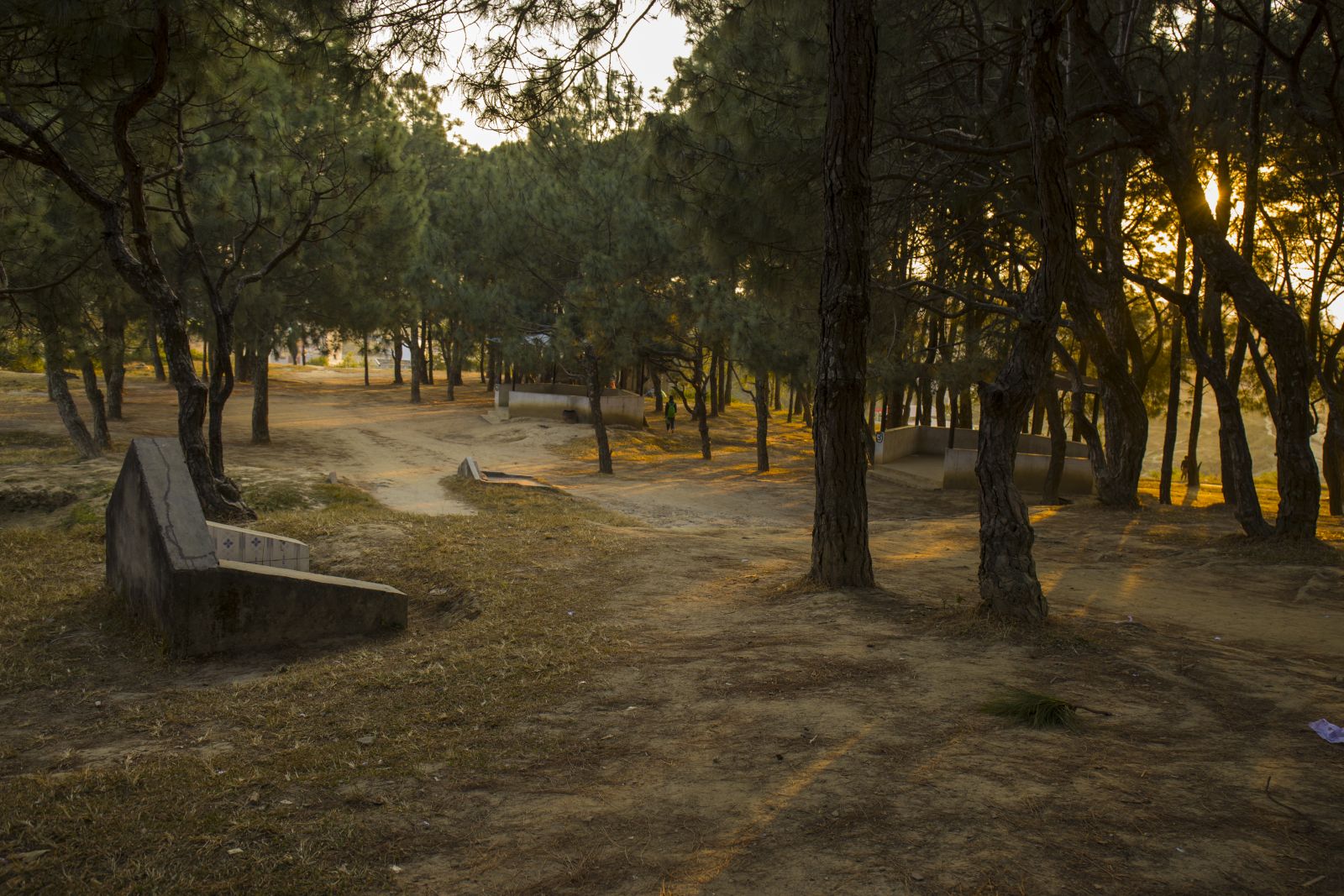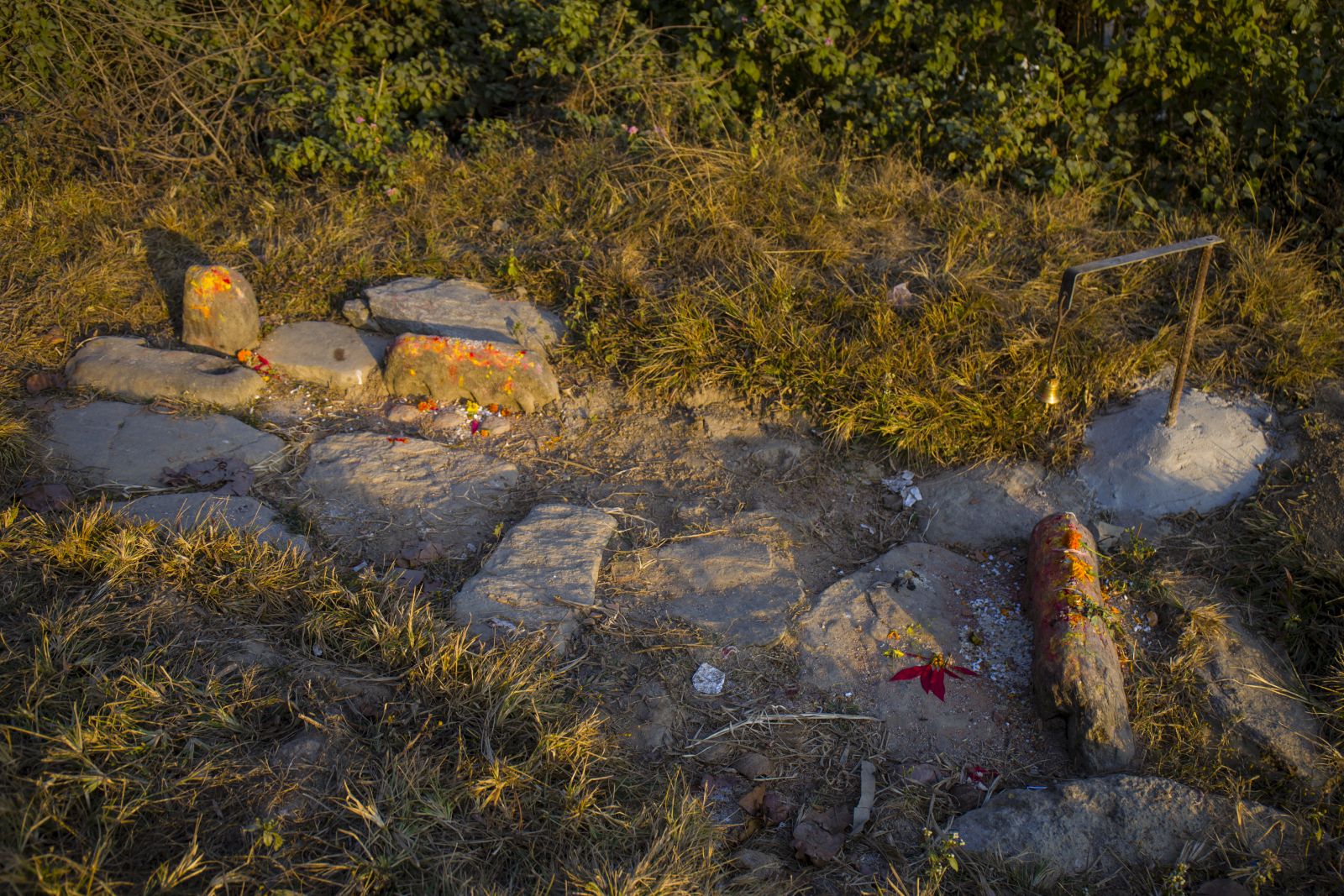Imagine a cemetery on the sidelines of a huge football ground and children actually playing football there. Spooky enough, isn't it? Well the name of the place itself gives away a clear hint; which is "Bhootkhel"! Locals say that the name of the place was coined because it's said that bhoot, or ghosts, came to play there, and khel means play, or game, in Nepali. Now it gets spookier! We talked to a few veteran locals of Bhootkhel to know more about this mysterious place in the humble Newar town of Tokha.
According to the local folklore, in the ancient times, people came to Bhootkhel to graze cattle, etc. But mysteriously, whoever went to the place disappeared somehow and never came back home. Obviously, this terrified the locals. They were also scared that if it continued that way, not even a single person will be left alive in Tokha. Therefore, they asked a tantric to solve the problem with his wit, who called upon a god by the help of tantric powers. To trick the god, the tantric asked the god how big it can be, to which the reply was: it can be so big that it can touch the sky, and if it bends down and screams, then the earth can burst open. So, when the god bent down, the tantric “hit it with a nail” and secured it forever to the ground.
At the very spot a temple has been built, which is called the Masaan Kali Temple, which stands today right next to the huge football ground. Some people wanted to name it Indrayeni Devi Temple, but the locals insist that it is only Masaan Kali. Inside the small temple there are idols of many deities like Bhairav, Kali, Ganesh, Seti Bhairav, etc. Just between the temple and the football ground, the dead are cremated on the open ground sans any roof or structure whatsoever. In Nepali language, masaan is a cemetery, hence the name of the temple next to the masaan is called Masaan Kali.
 Though there are no clear borders, markings, or lines drawn, spots are designated for cremation of the dead on the basis of their caste. There are many castes prevalent in Tokha, mainly Shrestha, Dangol, Napit, Nakarmi, Kapali, etc. Hari Man Shrestha, a local who lives in Bhootkhel itself, on the other side of the football ground, shows us two spots on the ground where black ashes of recent cremation were still remaining, and says that the Shresthas are cremated one spot ahead of the Dangols. He said one of the two burnt pyres was from just a few days ago. He also explains that infants below two months of age are not cremated, but buried, showing us a slope behind the temple where children were said to be buried. More children died in the old times, unlike today, and he said that crying voices of the children are still heard sometimes.
Though there are no clear borders, markings, or lines drawn, spots are designated for cremation of the dead on the basis of their caste. There are many castes prevalent in Tokha, mainly Shrestha, Dangol, Napit, Nakarmi, Kapali, etc. Hari Man Shrestha, a local who lives in Bhootkhel itself, on the other side of the football ground, shows us two spots on the ground where black ashes of recent cremation were still remaining, and says that the Shresthas are cremated one spot ahead of the Dangols. He said one of the two burnt pyres was from just a few days ago. He also explains that infants below two months of age are not cremated, but buried, showing us a slope behind the temple where children were said to be buried. More children died in the old times, unlike today, and he said that crying voices of the children are still heard sometimes.
There is a designated priest appointed as the caretaker of the Masan Kali Temple for a year. The local men take turns to be the caretaker priest. Their turn is called the Dyo Paa,. Dyo meaning God and paa meaning turn in the Newari language. Every year on the fifth of Baishakh, a new caretaker priest is appointed. The idols of the deities that are worshipped in Tokha's jatras are also kept in the priest's house for a year. On Tuesdays, Saturdays, Chaturdashi, and full moon days, the current priest performs puja on the idols in their home. There are thirty-four khalas in Tokha who take turns as the caretaker priest. The present designated priest comes to the temple every day in the morning and in the evening to clean and do the first puja path in the temple. We also saw a resident snake in the temple that the priests cannot remove or kill and which is allowed to stay in the temple premises as a "caretaker" of the gods and goddesses.
Old people there also have stories of seeing gods and goddesses dancing and seeing a figure. The current priest shares with us a creepy incident that his wife experienced once. While she was at the top of the staircase, his wife saw a red figure turning backwards at the bottom of the stairs. When his wife descended the staircase, the figure disappeared! Also, he says he had himself come to Masan Kali Temple at around midnight once, when he suddenly smelled incense sticks (agarbatti). According to him, there were no incense sticks burning there. The locals said they believe that the smell of incense sticks is a sign of the presence of gods and goddesses, whereas when human spirits or aatma's are around, only sounds, etc. may be heard. It is also believed that there was an army training ground at the area ten or twelve years ago during the Maoist insurgency. One of the army men had actually died just due to fear of the place.
 An elaborate hom is performed at the Masaan Kali Temple on Baishak 1 every year (first day of the Nepali calendar) roughly starting from one in the afternoon. The hom is a kind of puja performed by a total of five guthiyaars, who ignite a fire on the jogi kunda, chant mantras, and present offerings to the god. According to Shrestha, during the big hom, each and every edible thing that grows from the soil has to be offered to the god, from fruits to beans, grains, and also a few meat items like, fish, pigeons, sparrows, snakes and so on. In total, not less than 300 items of foodstuffs offered to the god during the hom. This is to please the god who had been “nailed down”. The next day, Tokha’s Bisket Jatra commences with seven raths, or chariots. Different deities are put in the raths and carried around Tokha.
An elaborate hom is performed at the Masaan Kali Temple on Baishak 1 every year (first day of the Nepali calendar) roughly starting from one in the afternoon. The hom is a kind of puja performed by a total of five guthiyaars, who ignite a fire on the jogi kunda, chant mantras, and present offerings to the god. According to Shrestha, during the big hom, each and every edible thing that grows from the soil has to be offered to the god, from fruits to beans, grains, and also a few meat items like, fish, pigeons, sparrows, snakes and so on. In total, not less than 300 items of foodstuffs offered to the god during the hom. This is to please the god who had been “nailed down”. The next day, Tokha’s Bisket Jatra commences with seven raths, or chariots. Different deities are put in the raths and carried around Tokha.
There is a small community forest around the Masan Kali Temple. As we strolled around the forest next to the football ground, we found a string of small idols on the ground inside the forest. As explained to us by Shrestha, they are kuldevtas (community gods) of different communities. The communities can come together to perform their kuldevta puja on any day between the days of Akshya Tritiya to Sithi Nakha.
Shrestha said that, in the old days, Bhootkhel was the most feared place in Tokha, for obvious reasons. Today, people come here to play football, have a picnic, or to pass their time in the huge expanse of land, but still, once it turns dark, very few people can be seen around the place. There is fear still present in the minds of the locals about the area and they treat it with reverence.









